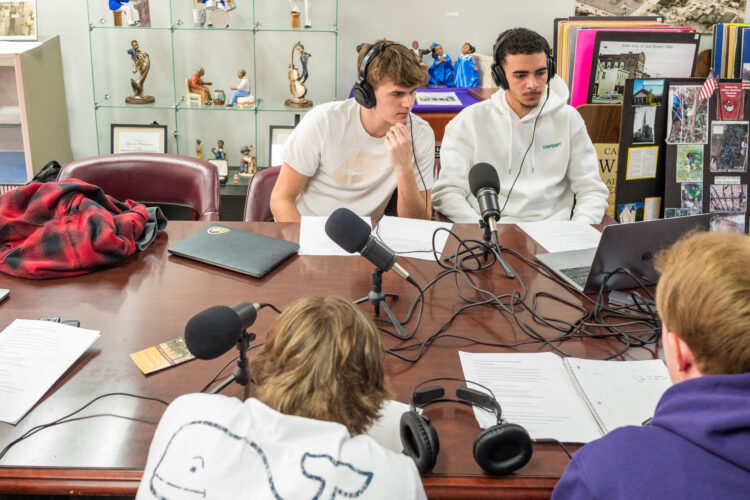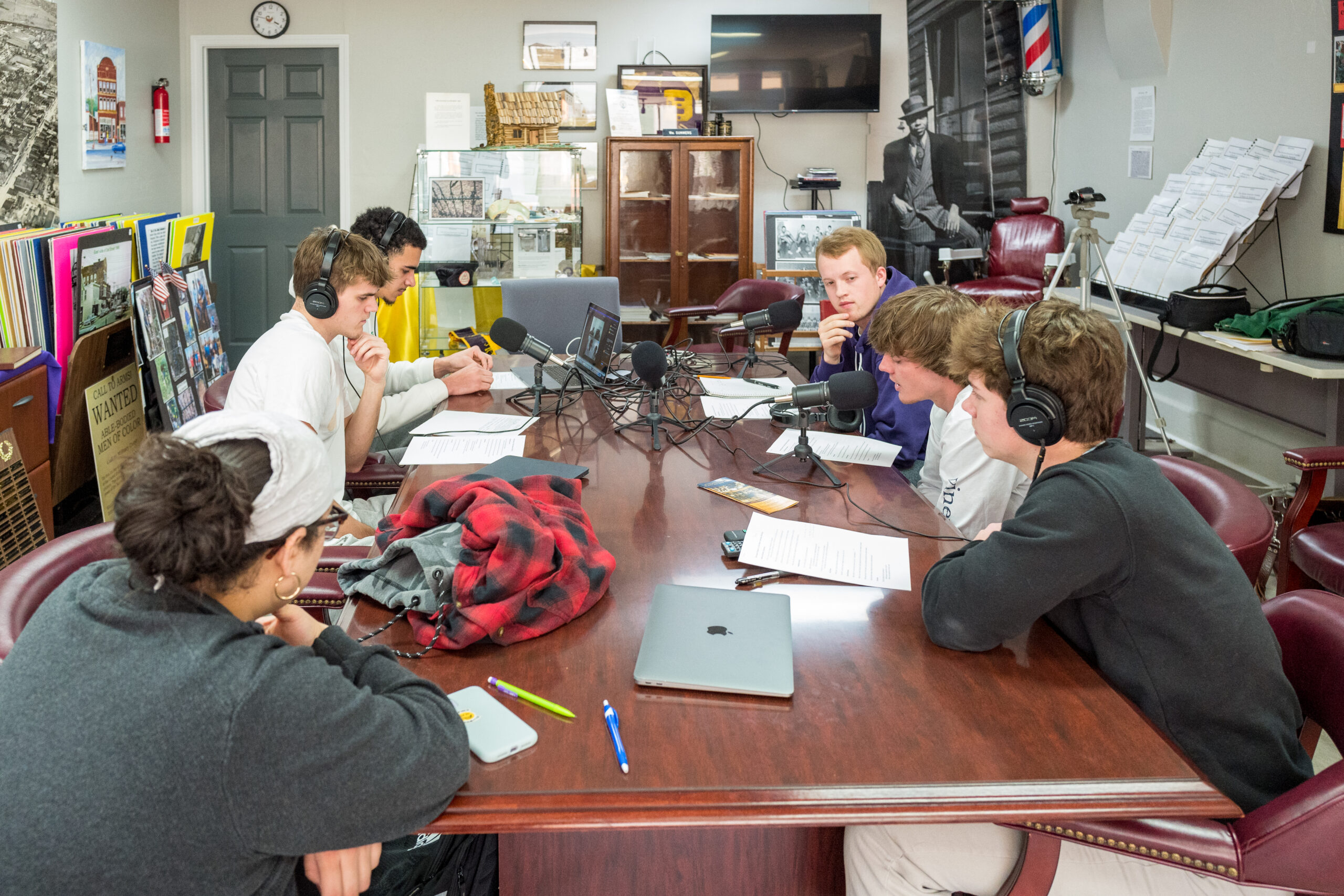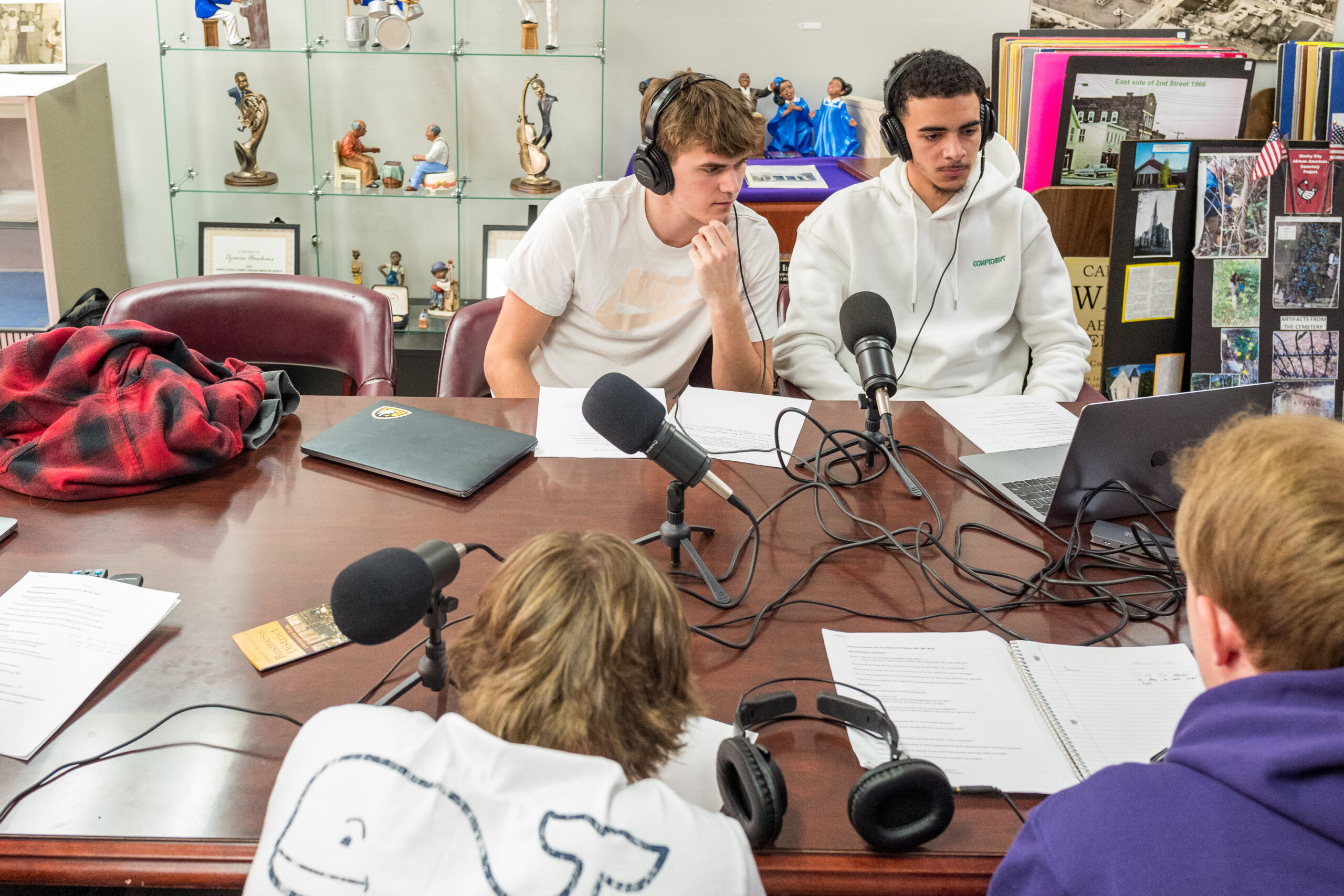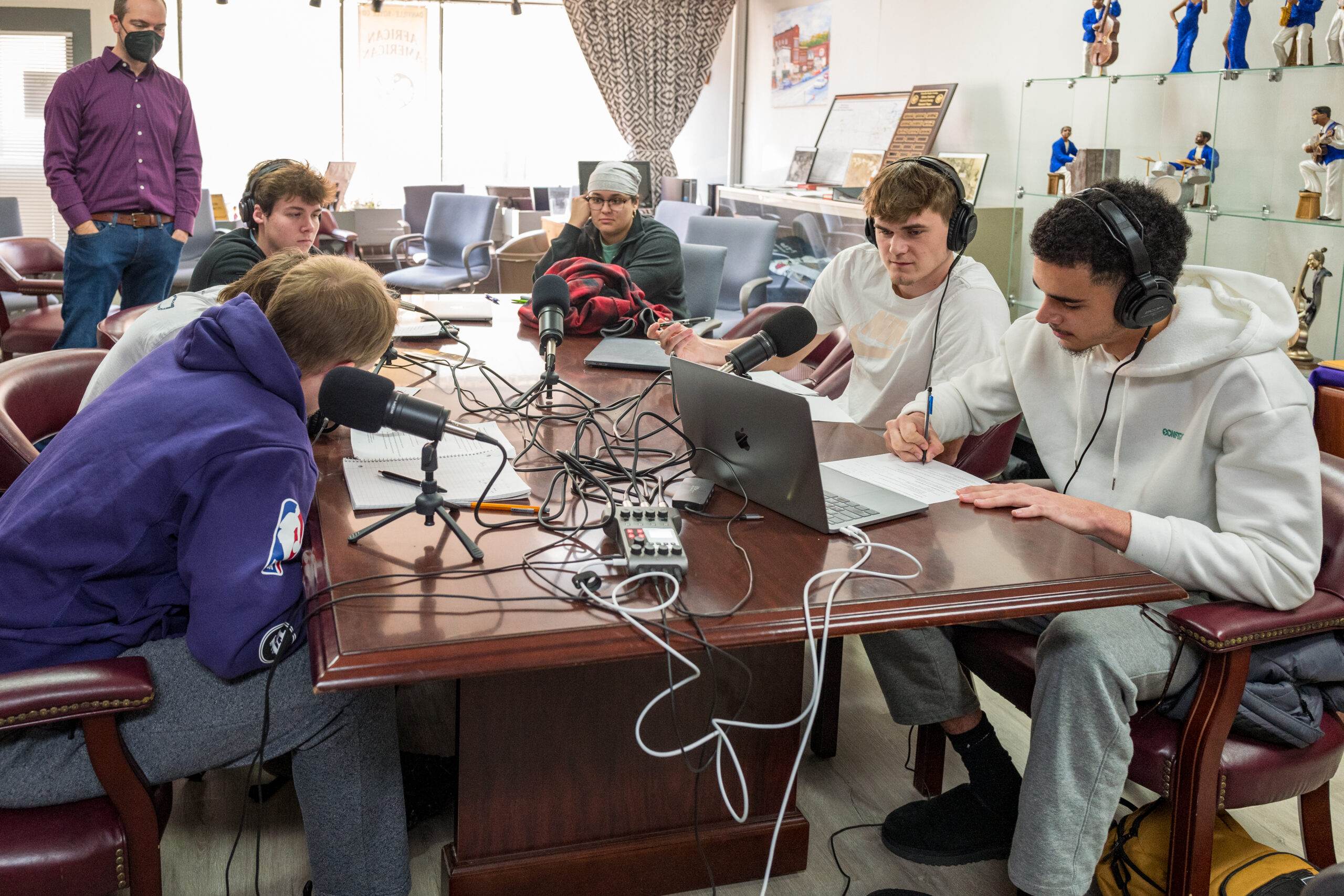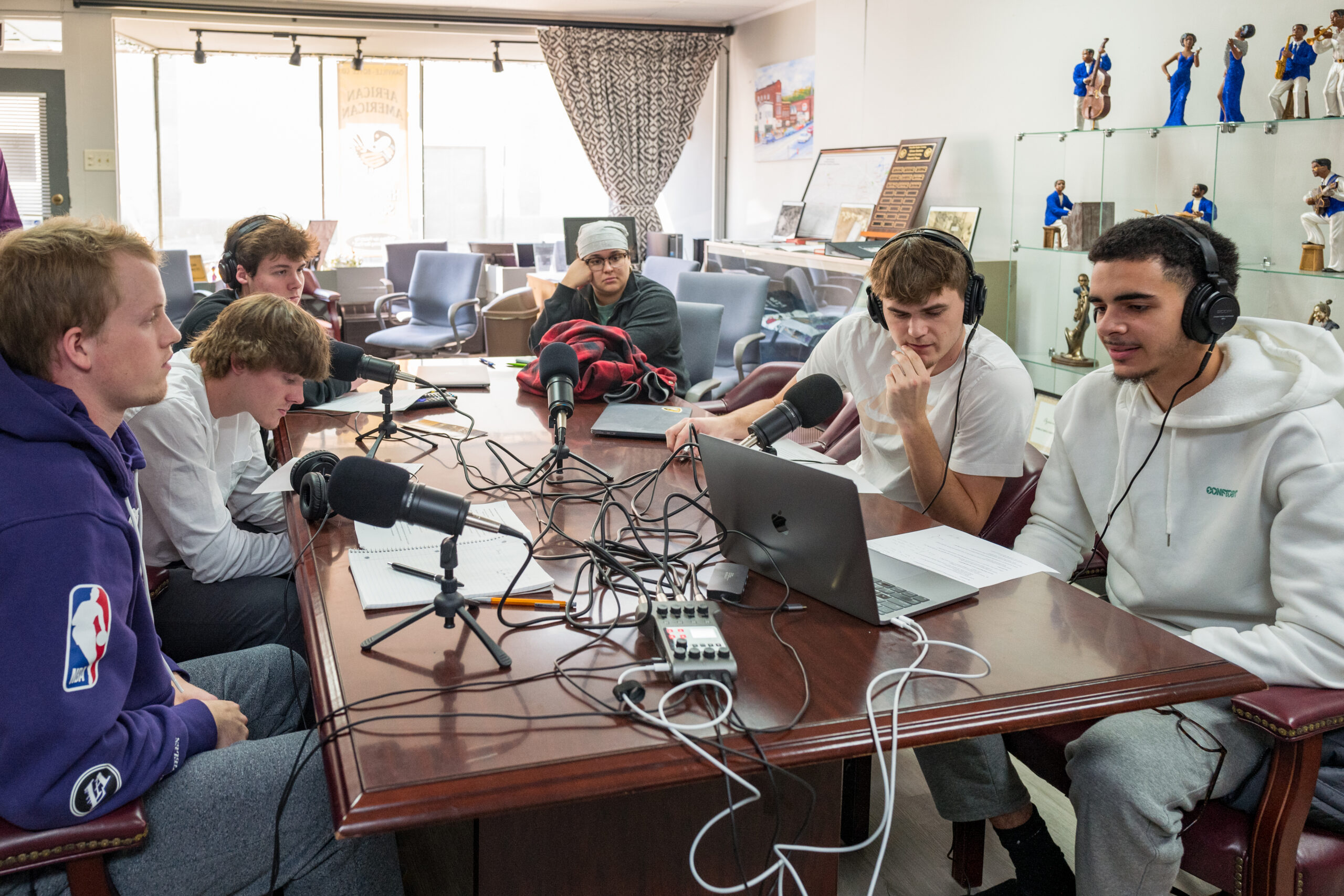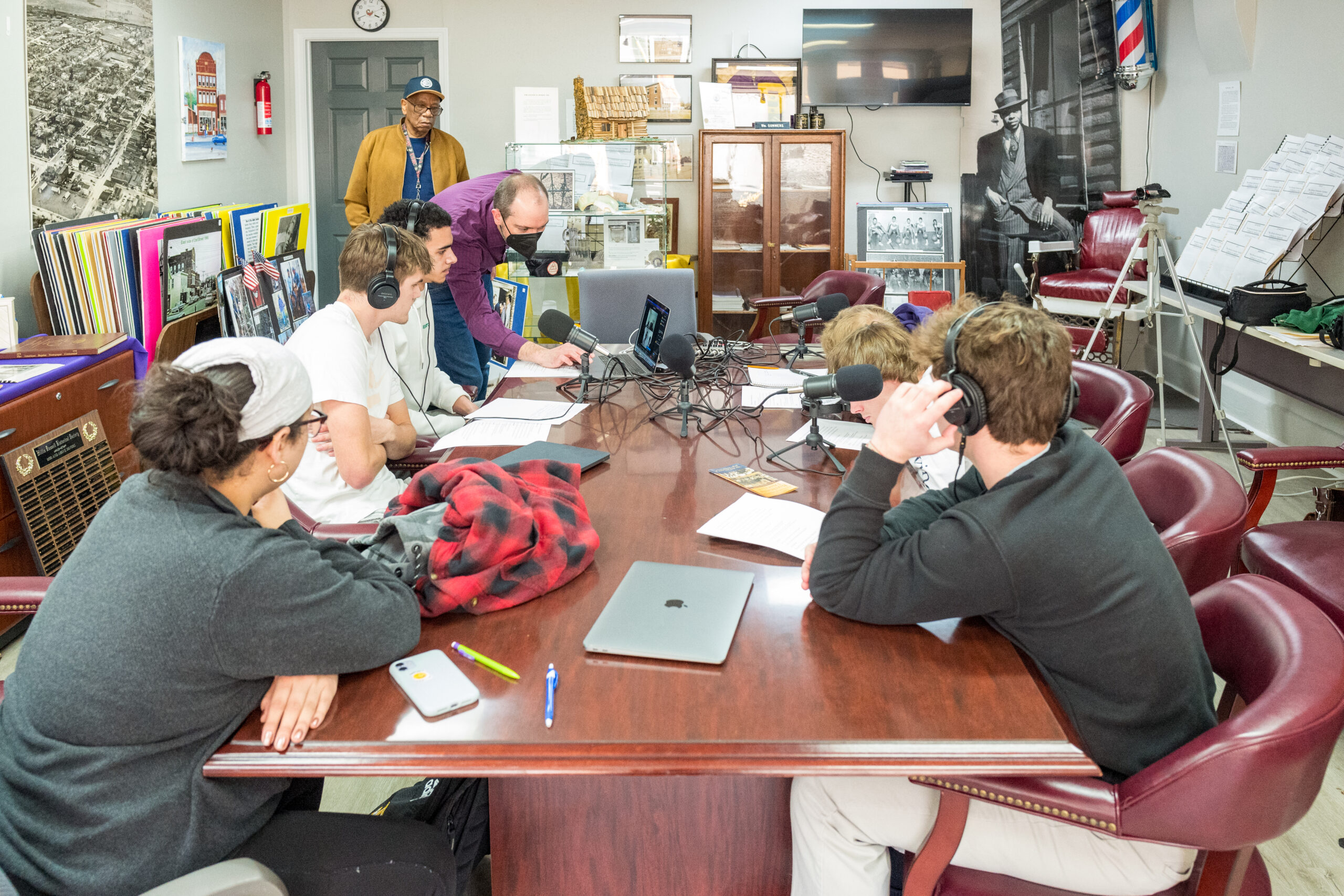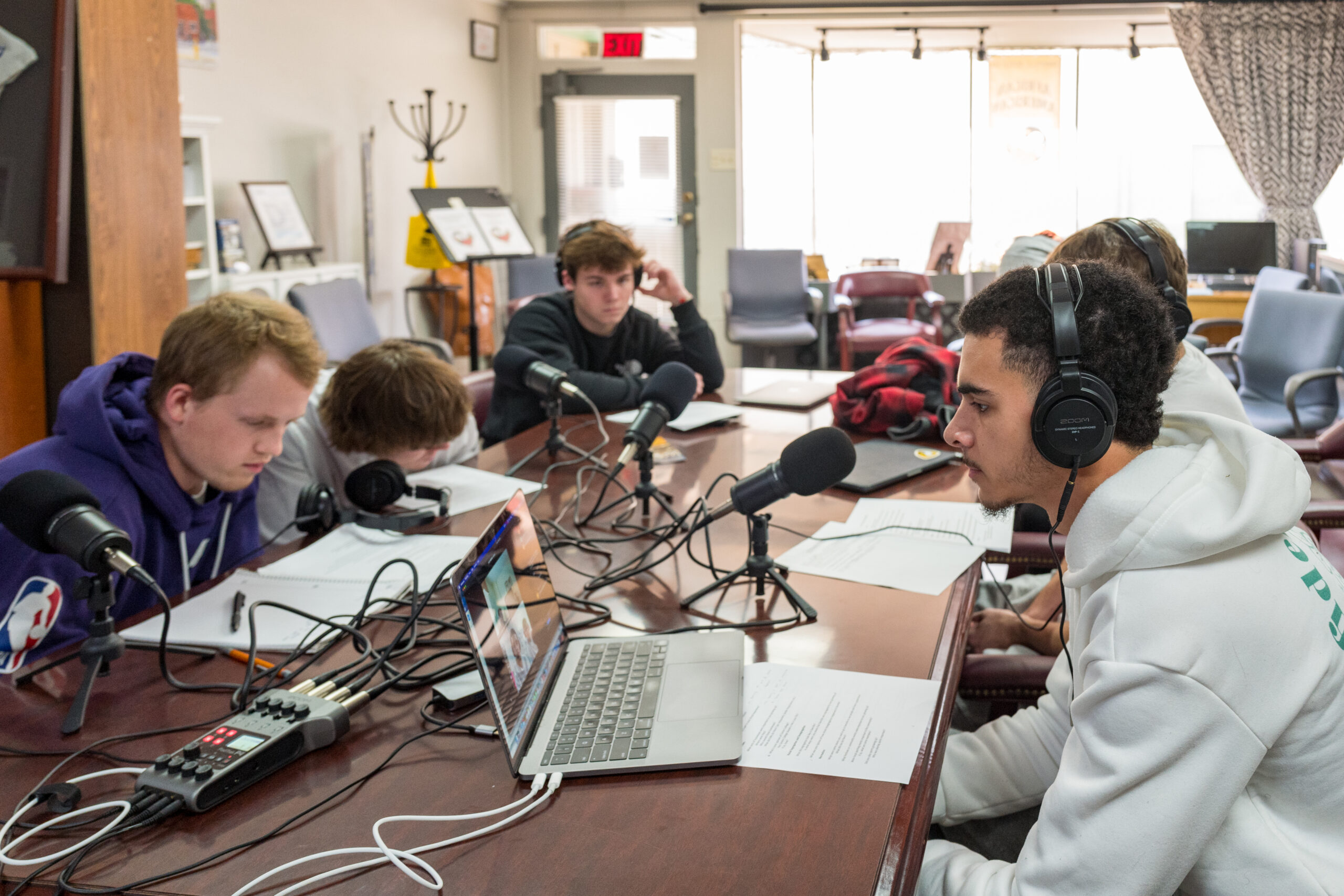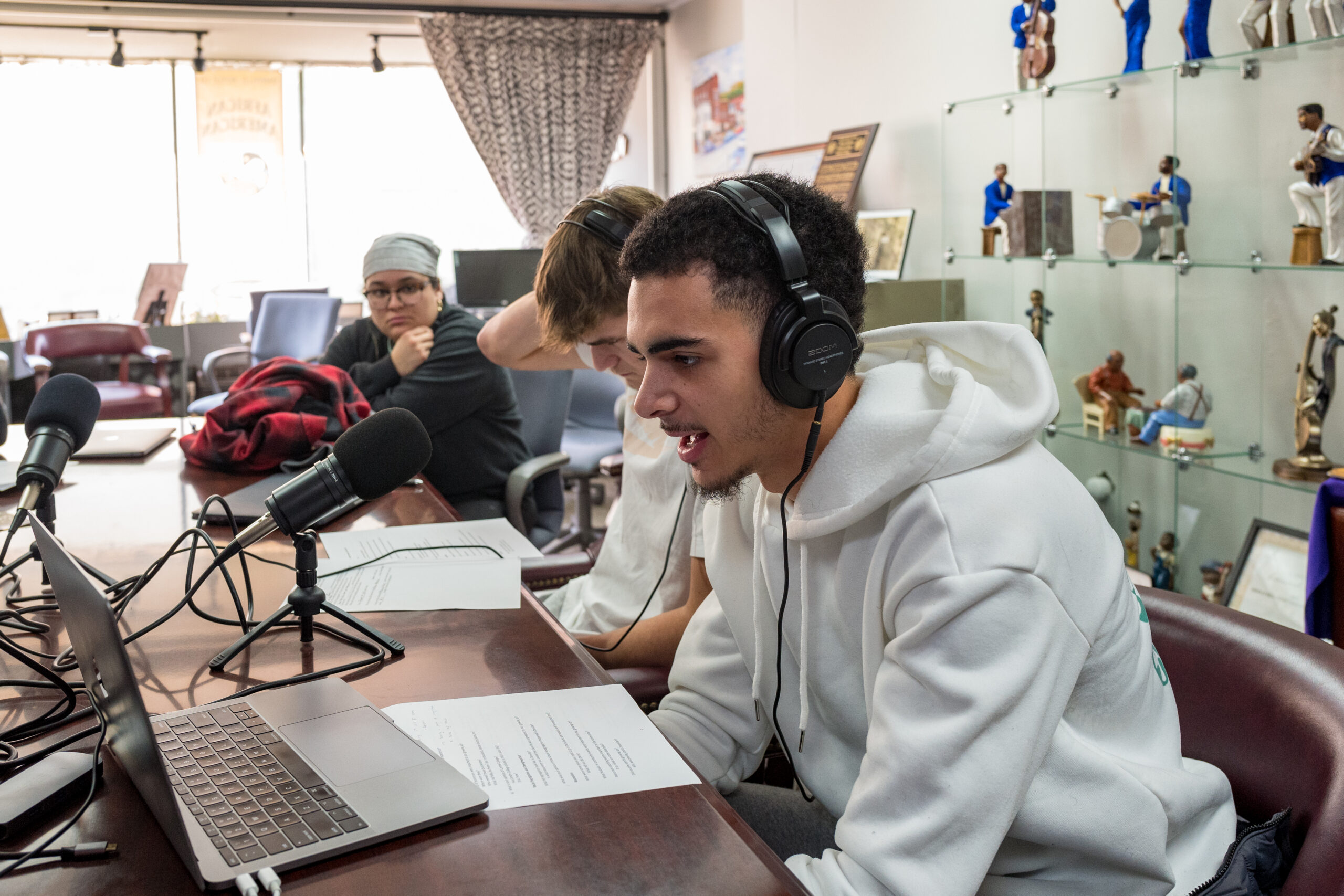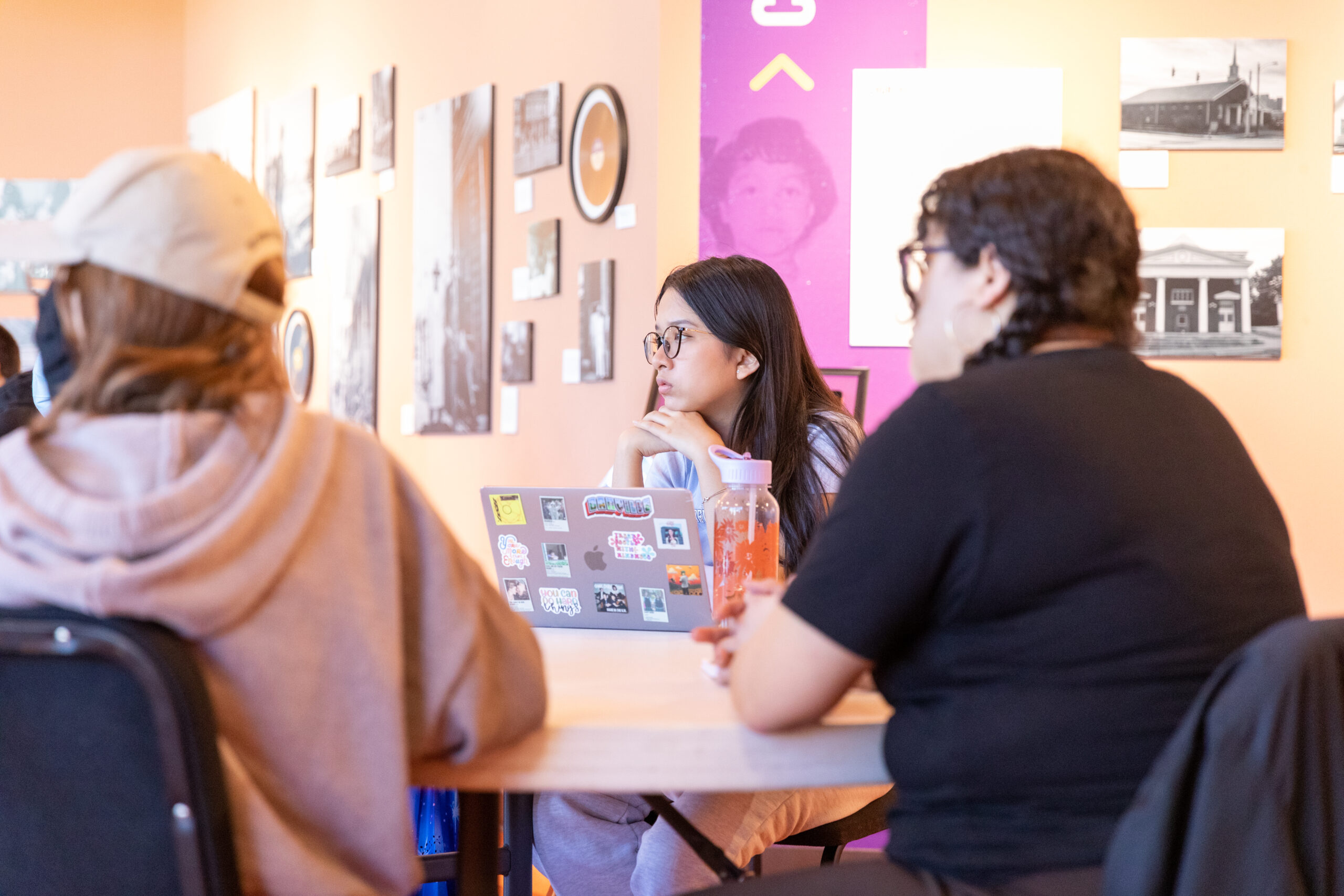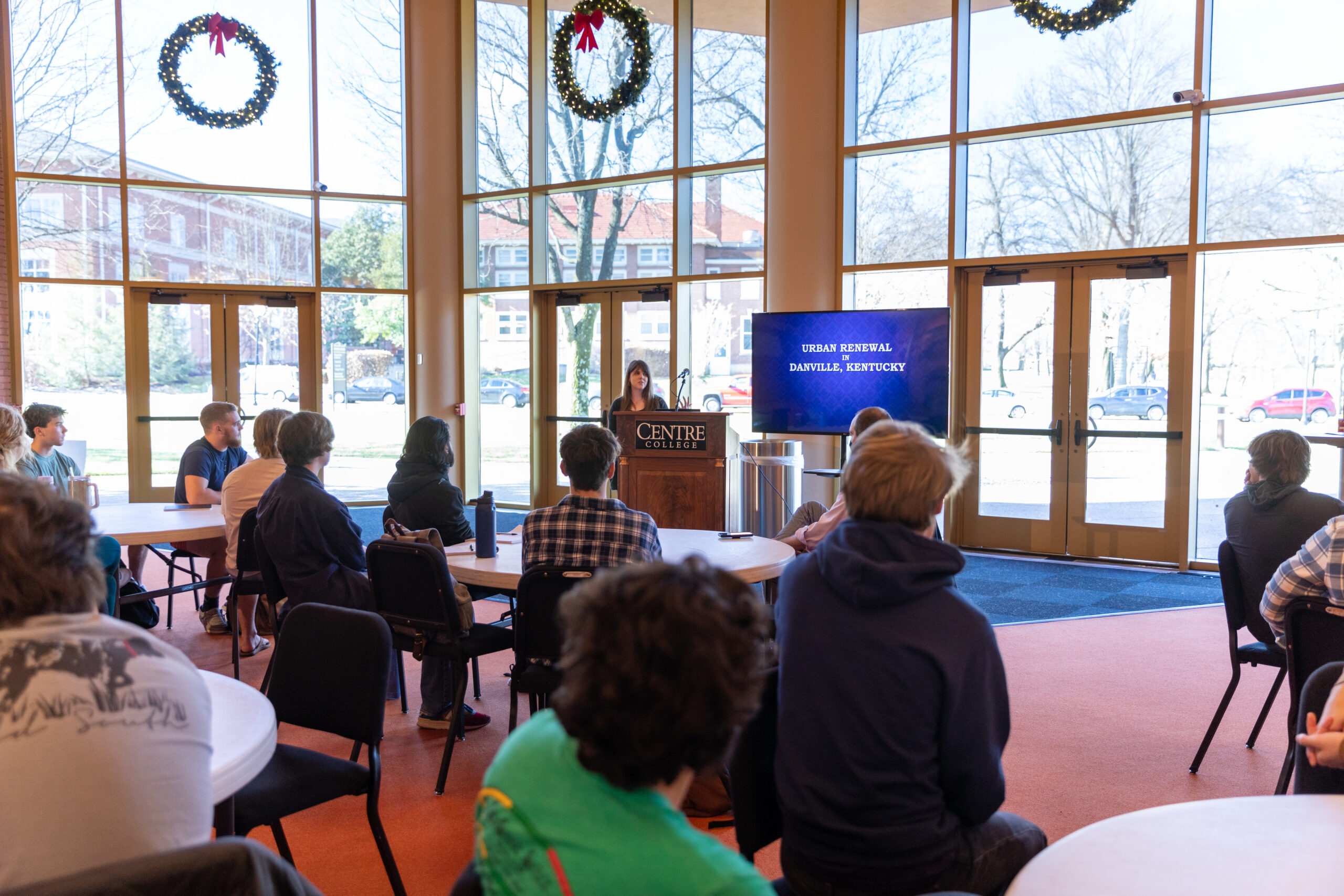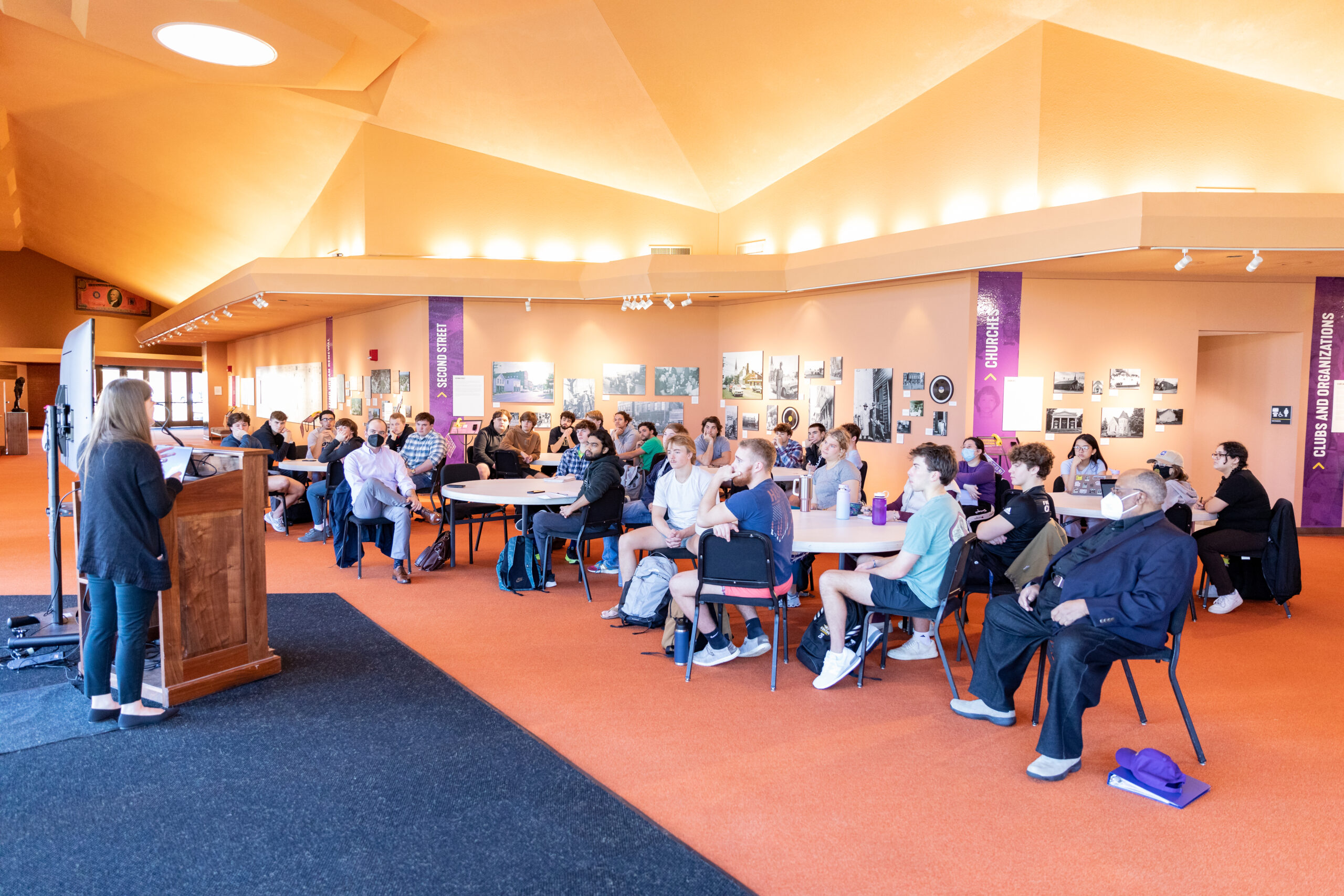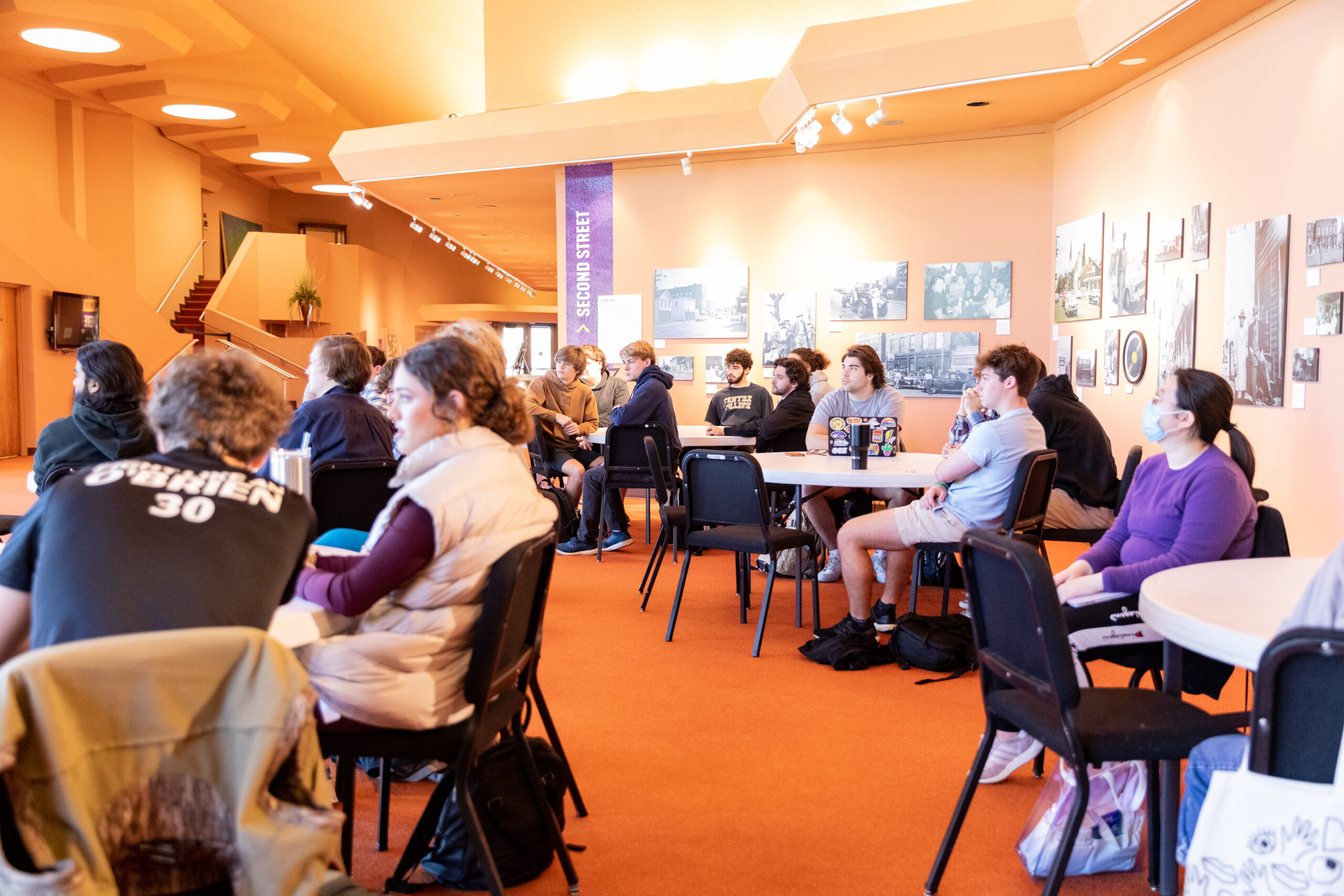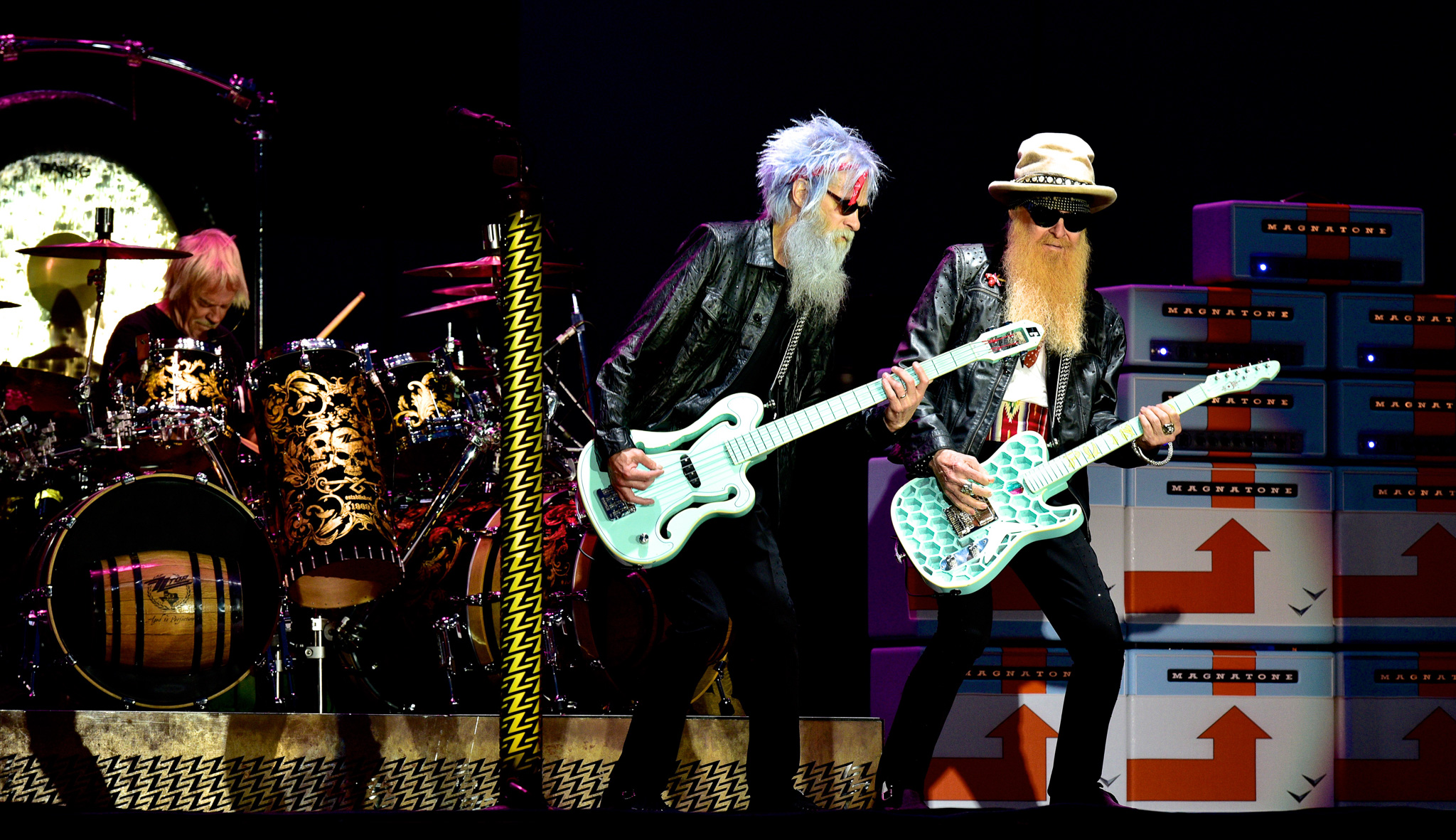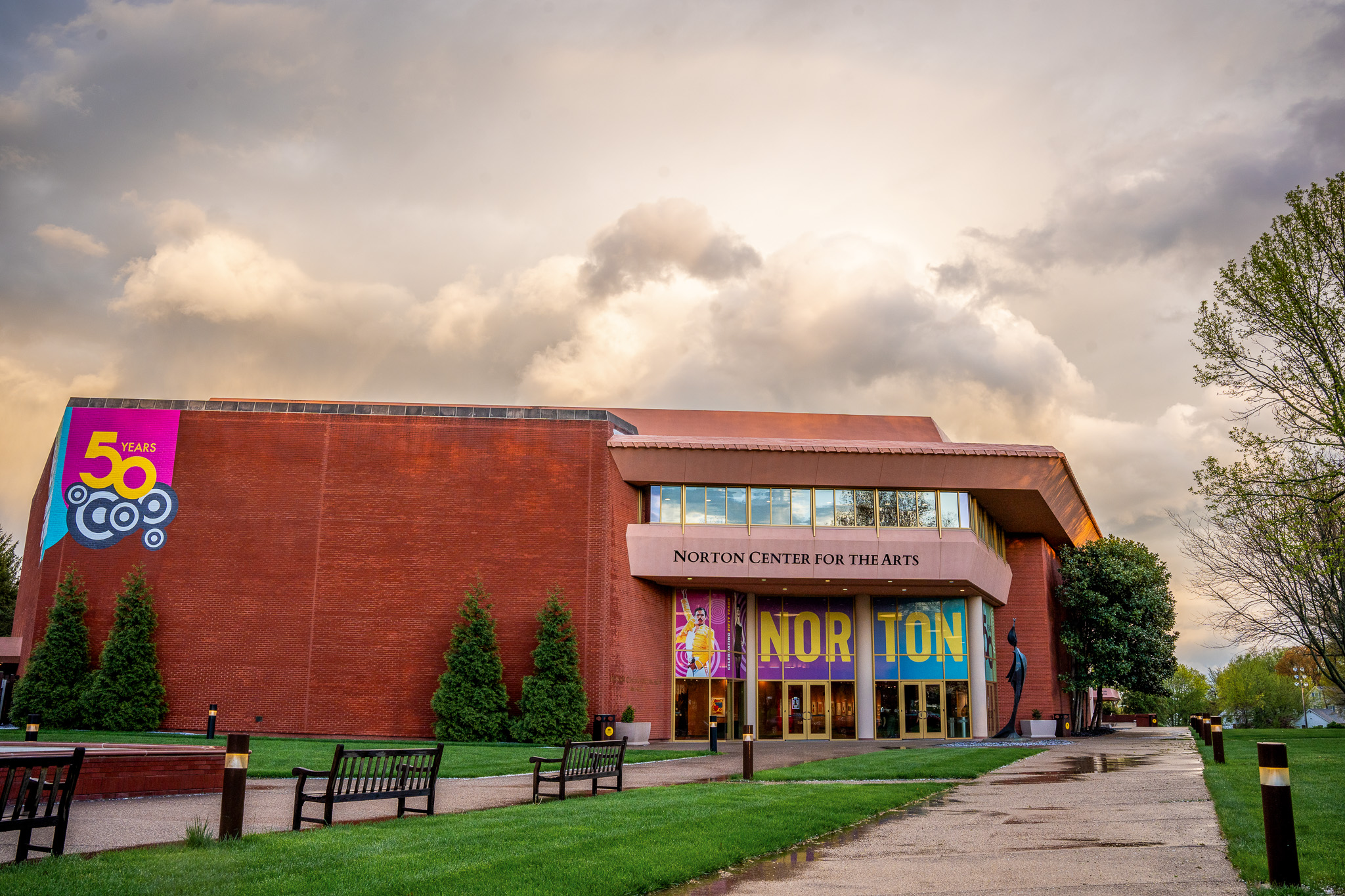
Centre Students and the Danville Community Respond to “We Were Here”
by Jeff Shenton
Jeffrey Shenton is a Visiting Assistant Professor of Anthropology at Centre College. He teaches courses in cultural anthropology, linguistic anthropology, environmental anthropology, the anthropology of violence, the anthropology of tourism, the anthropology of religion, oral history and writing. His published research has examined connections between language and the use of the environment in an Amazonian Kichwa community in Napo, Ecuador, a Tzotzil Maya community in Chiapas, Mexico and a Catholic order of women religious in central Kentucky. Jeff is deeply interested in the way that language, space, and memory frame understandings of identity, history and the natural world. He received his Ph.D. in Anthropology from Vanderbilt University in 2014.
During CentreTerm 2023, students in the anthropology class “Lived Histories” studied the history and legacy of federally-funded “urban renewal” projects in the United States during the middle part of the 20th Century, which disproportionately affected neighborhoods of color. Danville carried out several of these projects in the 1960s and 1970s, and the course offered the opportunity for students to interview Danville and Boyle County residents who were affected by them. To do so, the course partnered with the Danville-Boyle County African American Historical Society (DBCAAHS). Students learned to conduct oral history interviews for archival preservation and audio editing techniques so that clips of these interviews could be presented to the public as part of the “We Were Here” exhibition.
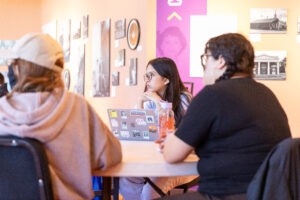 During the 2022-2023 academic year, I collected written reflections from 52 Centre Students in various venues, including the “Lived Histories” course, on the local impact of the “We Were Here” exhibition and the associated oral history project. The essay that follows sutures together the words of many of these student reflections. I have taken the liberty of ordering these thoughts and lightly editing the writing for clarity. I have not intended to change the meaning of these individual reflections. Rather, in attempting to build them into a coherent narrative, I hope to amplify the themes that students have developed in community with one another over the course of the year: the history of Centre College in Danville as it pertains to race, space, and place; the legacy of local urban renewal projects; and the echoes of these local projects in the many other American towns, big and small, that also live in the wake of their urban renewal programs.
During the 2022-2023 academic year, I collected written reflections from 52 Centre Students in various venues, including the “Lived Histories” course, on the local impact of the “We Were Here” exhibition and the associated oral history project. The essay that follows sutures together the words of many of these student reflections. I have taken the liberty of ordering these thoughts and lightly editing the writing for clarity. I have not intended to change the meaning of these individual reflections. Rather, in attempting to build them into a coherent narrative, I hope to amplify the themes that students have developed in community with one another over the course of the year: the history of Centre College in Danville as it pertains to race, space, and place; the legacy of local urban renewal projects; and the echoes of these local projects in the many other American towns, big and small, that also live in the wake of their urban renewal programs.
All writing is reproduced with the express permission of the authors.
Sharing, listening, preservation, and legacy
After reading the responses of the participants in the class, they are our future and we are blessed that the history of the plight of the African American community in Danville, Kentucky, is exposed. … It is a great feeling to know that the history is documented and that the story was told and heard.
– Charles Grey, former DBCAAHS Vice-President
How should we understand the effects of urban renewal projects in the United States on Black Americans?
“Root shock”: The biological response that plants have as a result of being ripped out of the ground. As the social psychiatrist Mindy Fullilove points out, it is the same for humans. It is clear that urban renewal did significant damage to both the social and financial capital of Black communities. Black Americans losing their homes and businesses greatly diminished the financial capital of Black communities. However, the destruction of important centers in the Black community and the destruction of housing, which forced people to move out of the community, also significantly harmed their social capital, as well.
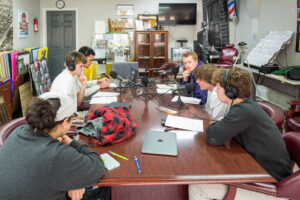 As a result, people no longer had the safety and comfort they once did in their old communities. They were forced to restart in a new place, while still trying to recover from the displacement they faced. This has generational effects: the psychological pain of loss, the loss of generational wealth, and the stress of a new environment all have their toll. At least 300,000 families were displaced due to urban renewal in the United States, and all had to face its consequences. There was little to no support system for these families, which often left a sense of abandonment.
As a result, people no longer had the safety and comfort they once did in their old communities. They were forced to restart in a new place, while still trying to recover from the displacement they faced. This has generational effects: the psychological pain of loss, the loss of generational wealth, and the stress of a new environment all have their toll. At least 300,000 families were displaced due to urban renewal in the United States, and all had to face its consequences. There was little to no support system for these families, which often left a sense of abandonment.
In America, Black communities continue to own significantly less wealth than their white counterparts, and in part this can be linked to urban renewal. Local businesses also exist within a community, constructing relationships with their customers that are difficult to rebuild. Even if a business is “compensated” by the government after being seized by eminent domain, that does not mean that the business will be able to re-establish itself, as it might be unable to afford new land or building costs with the money received from the government.
The same issues also affect Black homeowners. Many Danville community members interviewed by Centre students described how even though their housing could have been considered substandard it was still affordable and it was still something that they could own. If an urban renewal project comes and seizes one’s house there often was not an equally affordable property outside of the “blighted” areas that were being “renewed.”
But, while the people who conceptualized and carried out urban renewal thought they were doing some good by removing rundown houses, these communities didn’t just lose buildings. They lost places they grew up in, and as anyone who has grown up knows, places you grow up aren’t just buildings. They are landmarks that hold memories.
While the stories that we have covered in this course about urban renewal in cities across the United States of course have their unique nuances, the actions that were carried out, and the emotions felt as a result, are also extremely similar across the board. In bigger cities, Black neighborhoods were cleared out with promise of new housing, but highways and parking lots were built instead. Tight-knit communities were removed and office buildings were built as if they had been there forever. We saw in Roanoke, VA, for example, that the African American community was largely excluded from the political process of urban renewal, meaning they could not voice their opinions on the plans to bulldoze their community. The first project in Roanoke, known as the Commonwealth project, was started in 1955. Today, there is a highway running right through the area, as well as a civic center and parking lots. Their space had been removed, and with it all of its associated meanings. The story of urban renewal in Danville is no different, reflecting the actions of urban renewal at the national level, just on a small scale.
Why is oral history important to documenting and preserving the history of urban renewal?
In written texts, you cannot always portray how something is said or the emotion someone felt. Oral histories are great for showing us how someone felt or thought in response to an event, as well as their tone and inflections, which indicate a person’s mood. This is on top of oral histories giving us new perspectives and personal stories that would otherwise be undiscovered through written history.
For example, in his interview Mr. James Hunn could recall the number of homes on Danville’s Seventh street, the names of families, and where many of them relocated after urban renewal. This information is vital to understanding where families relocated to, giving us much needed insight into the Seventh street urban renewal project. Without the oral history interview structure, it is doubtful that this information would be a matter of public record.
All too often the stories and the narratives that we hear are formulated by the people doing the changing. So, it is important to hear from citizens who went through a time of change like this because historically Black communities in Danville still have memories of the institutions and spaces they created. These vary from social clubs, such as the Ponderosa and Swingland, to Black doctors’ and dentists’ offices. Each of these represent a critical part of historically Black Danville that we rarely examine. This is a useful exercise not only for students at Centre who want to learn more about Black communities, but for those that actually lived these experiences. By rediscovering the lost institutions of Danville through oral history, students can open opportunities for Black voices to be heard.
How does the “We Were Here” project speak to Centre’s aspiration to engage with the local community?
The “Centre Bubble” is a phrase tossed around during orientations and ice-breakers very often throughout the course of a Centre student’s life. The extent to which this is true often goes under the radar. Many Centre students are completely unaware of the larger Danville community and its historical relationship to Centre. When students engage in community research, Danville becomes a place with history. The folks we interviewed are all people who we are surrounded by when we go downtown, to the farmers market, or to sports games. It is respectful and important to learn and care about their histories. To learn is to engage.

We are involved in our own process of placemaking everywhere we go, and this is equally true at Centre. Students constantly speak about the “Centre Bubble,” but what rarely gets discussed is how a “Centre Bubble” relates to the placemaking happening down the street from where we live. What is Centre’s impact on the Danville community? How do Danville residents view Centre’s presence? Our own experiences of Danville as students are definitely enriched by learning about other local feelings of place.
But more importantly, we can only honestly and openly reckon with Centre’s historical legacy and impact in Danville by searching for voices who can share their own stories first. And that always comes from stories of place. When we acknowledge this, and work to understand the history of spaces and communities, we are able to break the “Centre bubble” just a bit and to improve our membership in the Danville and Boyle county community, not just as members of Centre.
The money and other resources available to colleges like Centre are best used when they engage students and community members in projects that empower the voices that those same institutions have historically silenced. The “We Were Here” project is an example of that activism, and it should be a starting point for further engagement in the community. That engagement needs to start with and center the voices of the Danville community.
What are the effects of unearthing and preserving local history through projects such as “We Were Here”?
One notable thing is the lack of mainstream newspaper accounts focused on the Black community, since the written word seems to be most valued in terms of dictating what “history” is. But even without all of that, we have cultivated a narrative that is real and legitimate through oral history and the “We Were Here” project. With the information that we now have, spreading it and educating others becomes much easier.
Danville’s small size makes it possible to piece together almost a full history of the Black community, as we see with the “We Were Here” exhibition. We are able to see a detailed account of events that impacted the community, culture, and social structure of Black Danville residents, and we can examine it deeply. This is simply not possible for a larger city.
Being aware of this painful history, we become more appreciative of the land we stand on and feel more respect toward the Black community because of what they have gone through. The people you are around are affected by you, and you, too, affect them. Thus, being knowledgeable and educated on the reasons they live where they do or shop where they do is so powerful. As one of the guest speakers to our class said, it was not only Black people who were affected by urban renewal programs, but white people, too. All Danville residents have been affected, whether directly or indirectly, by the legacy of urban renewal.
“We Were Here.” Now what?
I often wonder if our combined efforts as messengers have reached those students and community folks with whom we share our stories and life experiences. These responses show that we are being listened to, through our opinions and an effort to understand what the history of our community means to others. And, how it shapes our future.
– Michael Hughes, DBCAAHS President
